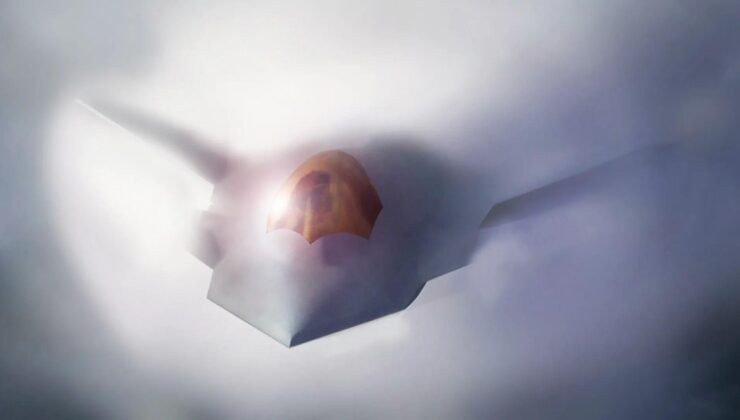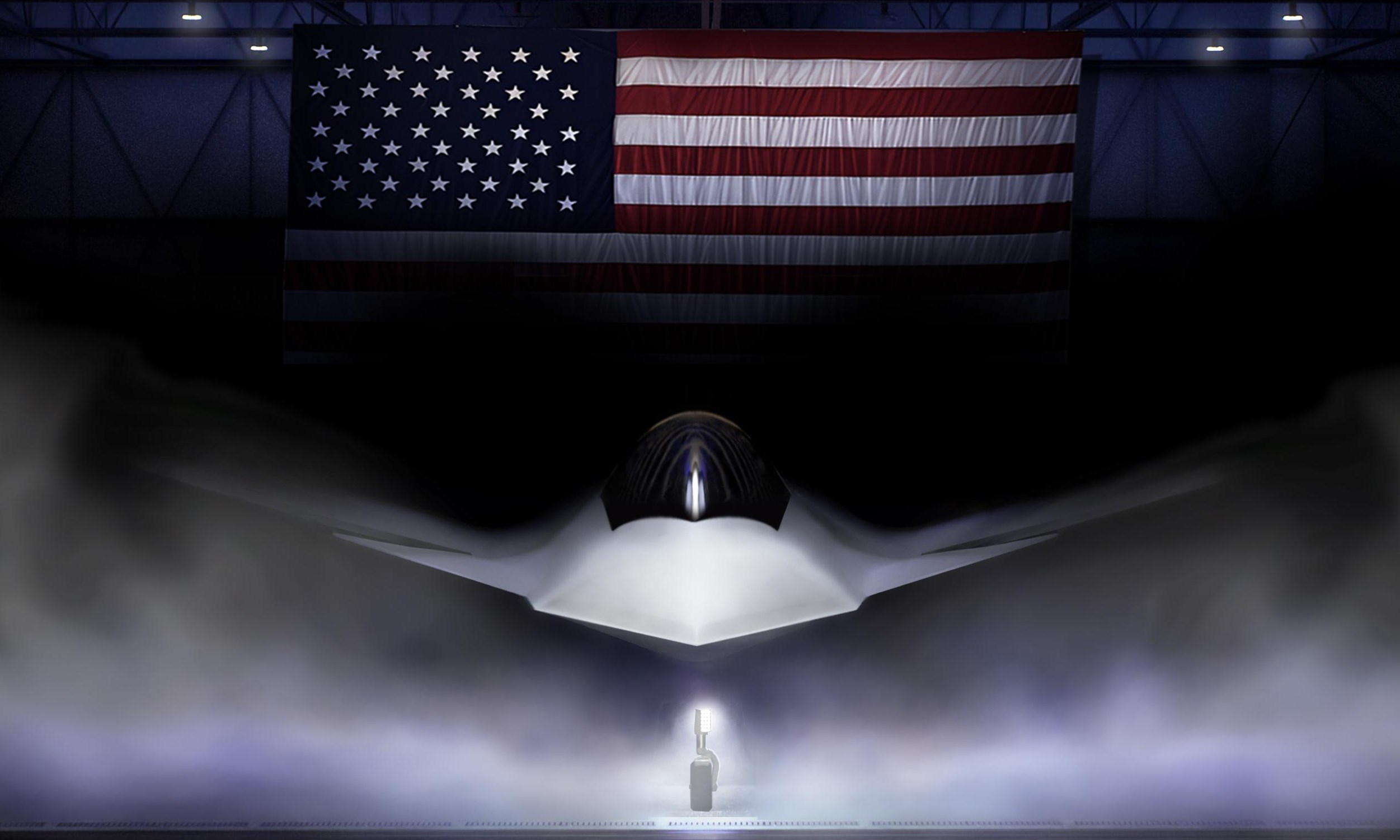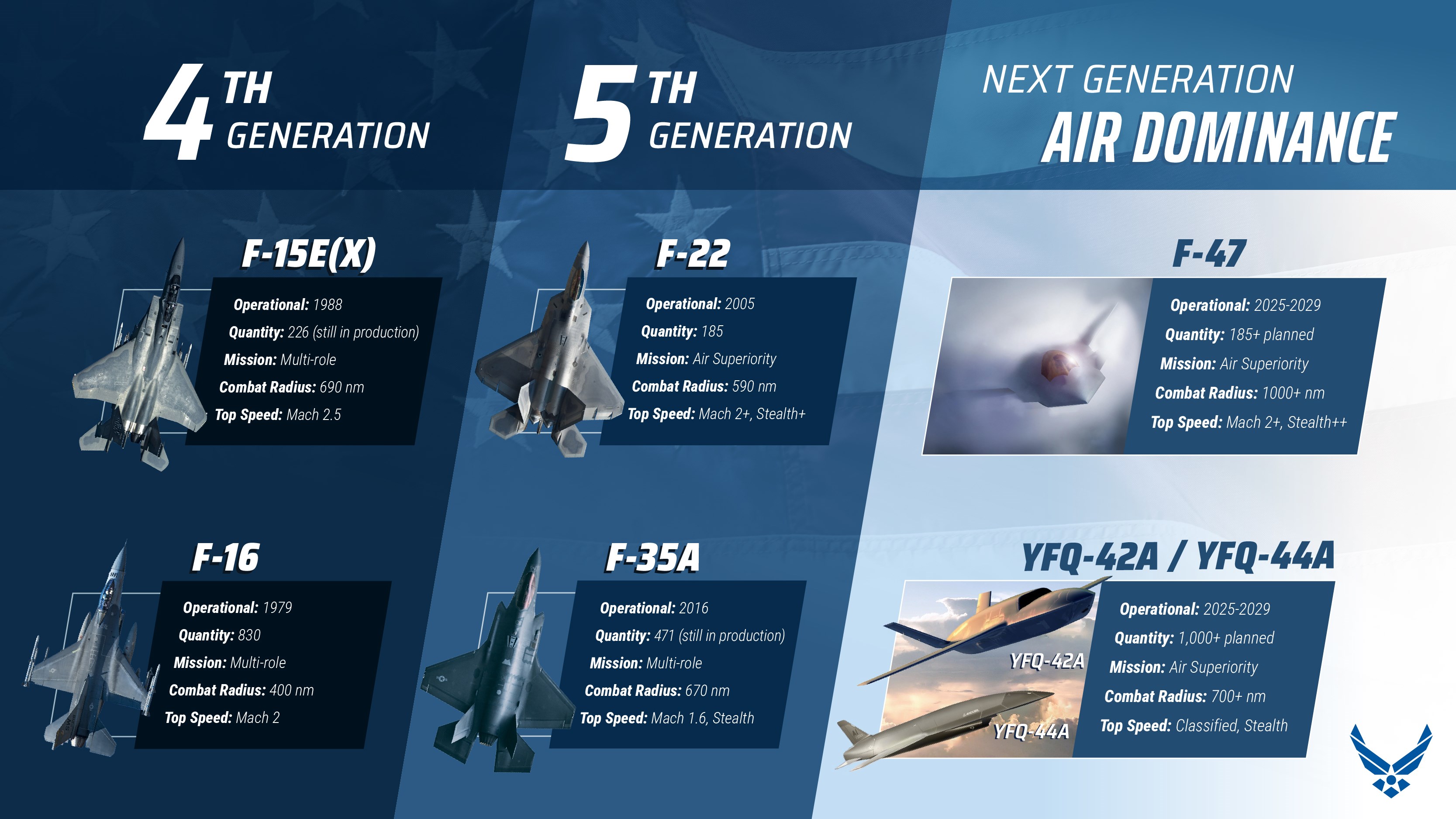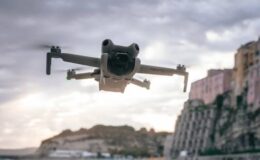

In March, US President Donald Trump awarded Boeing the prestigious contract for the Pentagon’s next-generation fighter jet as part of the Next Generation Air Dominance (NGAD) program, christening it the Boeing F-47. Initial details were scarce, but a recent infographic by US Air Force Commander General David Allvin, shared on X, offers insights into the advanced capabilities of the F-47 and the innovative Collaborative Combat Aircraft (CCA) that will accompany it.

Developed to surpass its predecessors, the F-47 boasts a 70 percent greater mission range compared to the F-22 Raptor, providing an operational radius exceeding 1,000 nautical miles (approximately 1,852 kilometers). This extended range is pivotal in the Indo-Pacific, allowing tanker aircraft to operate further from Chinese air defense systems. While both the F-47 and F-22 achieve speeds above Mach 2, the F-47’s enhanced Stealth++ capabilities far exceed the F-22’s “Stealth+” and the F-35’s “Stealth”, offering superior radar, infrared, and visual invisibility.

The US Air Force aims to acquire over 185 units of the F-47, potentially matching or exceeding the F-22 fleet, which was limited by budget constraints. General Allvin emphasized the F-47’s lower cost compared to the F-22, with operational deployment expected between 2025 and 2029. The timeline remains ambiguous, possibly referring to initial flights, operational capability, or full deployment.

Accompanying the F-47 are advanced unmanned systems: General Atomics‘ YFQ-42A and Anduril‘s YFQ-44A. These CCAs are designed to operate over 700 nautical miles (approximately 1,296 kilometers) with classified speed capabilities and stealth features. Test flights are projected to commence in 2025, with full operational status by 2029. The US plans to procure more than 1000 of these UAVs, integrating them with existing fighters like the F-22 and F-35 to form hybrid fleets where manned and unmanned elements collaborate seamlessly.
The revelation of the F-47 aligns with China’s testing of sixth-generation prototypes, such as the J-36 and J-50. Although unofficial, these tests bolster China’s claims of airspace dominance, with capabilities extending to 1,000 kilometers and speeds reaching Mach 2.5. Experts suggest that the US’s F-47 and CCA systems are designed to counter China’s anti-access/area denial (A2/AD) strategy, particularly in the Indo-Pacific. These advanced aircraft will enable operations from more secure, distant bases, reducing the risk to US forces in conflict zones.
SİGORTA
11 saat önceSİGORTA
5 gün önceSİGORTA
6 gün önceSİGORTA
6 gün önceSİGORTA
7 gün önceSİGORTA
8 gün önceSİGORTA
8 gün önceSİGORTA
12 gün önceSİGORTA
12 gün önceBES / HAYAT
12 gün önce 1
DJI Mini 5: A Leap Forward in Drone Technology
18287 kez okundu
1
DJI Mini 5: A Leap Forward in Drone Technology
18287 kez okundu
 2
xAI’s Grok Chatbot Introduces Memory Feature to Rival ChatGPT and Google Gemini
13913 kez okundu
2
xAI’s Grok Chatbot Introduces Memory Feature to Rival ChatGPT and Google Gemini
13913 kez okundu
 3
7 Essential Foods for Optimal Brain Health
12837 kez okundu
3
7 Essential Foods for Optimal Brain Health
12837 kez okundu
 4
Elon Musk’s Father: “Admiring Putin is Only Natural”
12676 kez okundu
4
Elon Musk’s Father: “Admiring Putin is Only Natural”
12676 kez okundu
 5
Minnesota’s Proposed Lifeline Auto Insurance Program
10587 kez okundu
5
Minnesota’s Proposed Lifeline Auto Insurance Program
10587 kez okundu
Sigorta Güncel Sigorta Şikayet Güvence Haber Hasar Onarım Insurance News Ajans Sigorta Sigorta Kampanya Sigorta Ajansı Sigorta Sondakika Insurance News